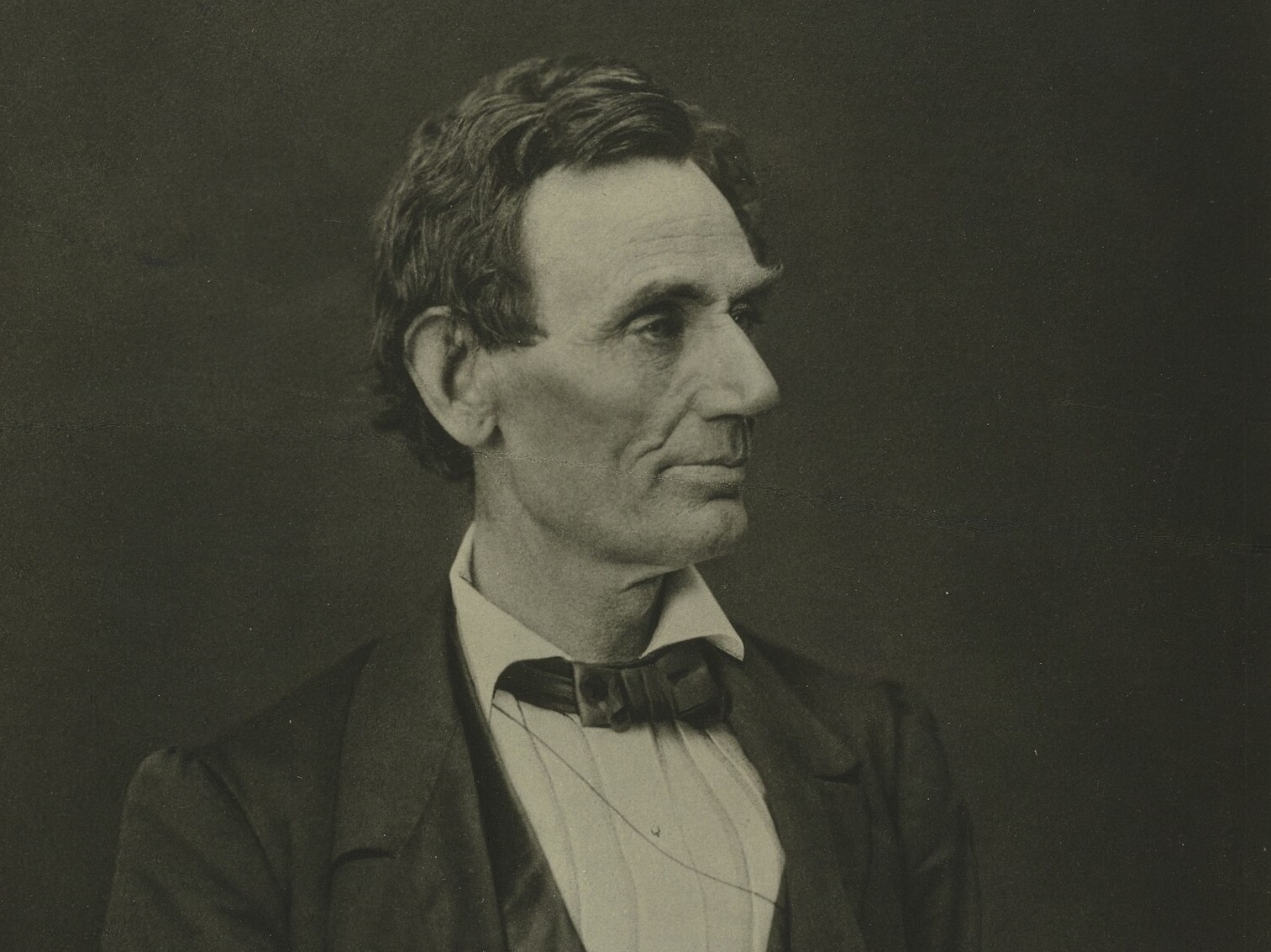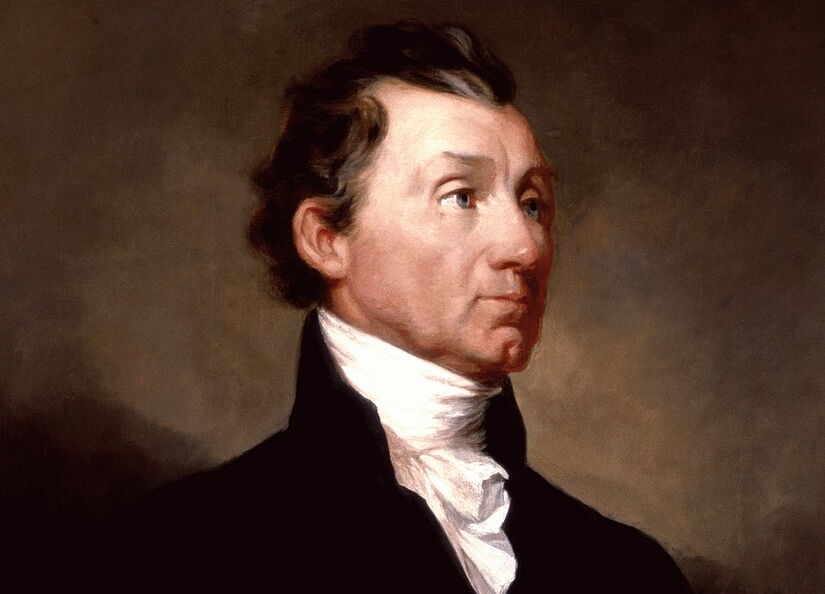Big In The Electoral College
As we are reminded every four years, the President of the United States isn't chosen by a pure popular vote. Instead, each state has a number of electoral college delegates—and the candidate that wins the popular vote in that state (with the exception of a state or two) gets all the delegates. The number of electors has increased over the years—but since 1960 there have been 538 electors up for grabs, with 270 being the magic number to get the win.
Because the number of electors has changed over the years, rather than look at the number of electors won we judge these victories based on the percentage of the available electors that the victor won. So, let's get out the vote...
1856: James Buchanan (58.78%)
Total Electors: 296
James Buchanan (Democrat): 174
John C Frémont (Republican): 114
Millard Fillmore (Know Nothing/Whig): 8
Slavery was the main issue in the election and back then the Democrats were seen as the "pro-slavery party".
 George Peter Alexander Healy, Wikimedia Commons
George Peter Alexander Healy, Wikimedia Commons
1812: James Madison (58.99%)
Total Electors: 217
James Madison (Democratic-Republican): 128
DeWitt Clinton (Democratic-Republican): 89
 John Vanderlyn, Wikimedia Commons
John Vanderlyn, Wikimedia Commons
1860: Abraham Lincoln (59.41%)
Total Electors: 252
Abraham Lincoln (Republican): 180
John C Breckinridge (Southern Democratic): 72
John Bell (Constitutional Union): 39
Stephen A Douglas (Democrat): 12
Although Lincoln won the popular vote by a healthy margin, his entire electoral plurality came from northern states. This accentuated the divide in the country that had been building for a decade and was a major catalyst for the states that would become the Confederacy seceding from the Union.
 Cleveland Public Library, Wikimedia Commons
Cleveland Public Library, Wikimedia Commons
1896: William McKinley (60.63%)
Total Electors: 447
William McKinley (Republican): 271
William Jennings Bryan (Democrat): 176
This election took place during the economic depression known as the Panic of 1893.
 White House, Wikimedia Commons
White House, Wikimedia Commons
2012: Barack Obama (61.71%)
Total Electors: 538
Barack Obama (Democrat): 332
Mitt Romney (Republican): 206
Obama was the first president since Ronald Reagan in 1984 to win a majority of the national popular vote more than once.
 Pete Souza, CC BY 3.0, Wikimedia Commons
Pete Souza, CC BY 3.0, Wikimedia Commons
1844: James K Polk (61.82%)
Total Electors: 275
James K Polk (Democrat): 170
Henry Clay (Whig): 105
While Polk's electoral victory was solid, he barely won the popular vote—defeating Clay by fewer than 40,000 votes.
 Brady, Mathew B, Wikimedia Commons
Brady, Mathew B, Wikimedia Commons
1892: Grover Cleveland (62.39%)
Total Electors: 444
Grover Cleveland (Democrat): 277
Benjamin Harrison (Republican): 145
James B Weaver (Populist): 22
With the win, Cleveland became the first president in American history to be elected to a non-consecutive second term.
 Unknown Author, Wikimedia Commons
Unknown Author, Wikimedia Commons
1900: William McKinley (65.32%)
Total Electors: 447
William McKinley (Republican): 292
William Jennings Bryan (Democrat): 155
This was a rematch of the previous elections from 1896—and while rematches had happened before, this was the first time the same candidate won both times.
 Unknown author, Wikimedia Commons
Unknown author, Wikimedia Commons
1908: William Howard Taft (66.46%)
Total Electors: 483
William Howard Taft (Republican): 321
William Jennings Bryan (Democrat): 162
Yup, Bryan lost again. William Jennings Bryan ran for president three times and came in second all three times. This being his worst loss of the three.
 Pach Brothers, Wikimedia Commons
Pach Brothers, Wikimedia Commons
2008: Barack Obama
Total Electors: 538
Barack Obama (Democrat): 365
John McCain (Republican): 173
Obama flipped 10 states from Republican to Democrat this election, including (and it sounds crazy to even think it today) Florida.
 Center for American Progress Action Fund, CC-BY-SA-2.0, Wikimedia Commons
Center for American Progress Action Fund, CC-BY-SA-2.0, Wikimedia Commons
1828: Andrew Jackson (68.20%)
Total Electors: 261
Andrew Jackson (Democrat): 178
John Quincy Adams (National Republican): 83
9.5% of Americans cast a vote for president in 1828—compared with 3.4% in 1824.
 Ralph Eleaser Whiteside Earl, Wikimedia Commons
Ralph Eleaser Whiteside Earl, Wikimedia Commons
1992: Bill Clinton (68.77%)
Total Electors: 538
Bill Clinton (Democrat): 370
George HW Bush (Republican): 168
Ross Perot (Independent): 0
While Perot didn't win a single electoral vote, he did get an impressive 19,743,821 votes—which equated to 18.9%.
 Kenneth C. Zirkel, CC BY-SA 4.0, Wikimedia Commons
Kenneth C. Zirkel, CC BY-SA 4.0, Wikimedia Commons
1808: James Madison (69.71%)
Total Electors: 175
James Madison (Democratic-Republican): 122
Charles Cotesworth Pinckney (Federalist): 47
 Edwin, David, Wikimedia Commons
Edwin, David, Wikimedia Commons
1996: Bill Clinton (70.45%)
Total Electors: 538
Bill Clinton (Democrat): 379
Bob Dole (Republican): 159
Ross Perot (Independent): 0
Perot again won no electoral votes, but this time picked up 8,085,294 votes (8.4%).
 The U.S. National Archives, Picryl
The U.S. National Archives, Picryl
1904: Theodore Roosevelt (70.59%)
Total Electors: 476
Theodore Roosevelt (Republican): 336
Alton B Parker (Democrat): 140
Roosevelt became the first presidential candidate to receive over 300 electoral votes in a presidential election.
 Pach Brothers, Wikimedia Commons
Pach Brothers, Wikimedia Commons
1924: Calvin Coolidge (71.94%)
Total Electors: 531
Calvin Coolidge (Republican): 382
John W Davis (Democrat): 136
Robert M La Follette (Progressive): 13
Davis won the lowest share of the popular vote of any Democratic nominee in history (28.8%).
 Notman Studio, Boston, Wikimedia Commons
Notman Studio, Boston, Wikimedia Commons
1868: Ulysses S Grant (72.79%)
Total Electors: 294
Ulysses S Grant (Republican): 214
Horatio Seymour (Democrat): 80
This was the first post-civil war election and the first since abolition.
1920: Warren G Harding (76.08%)
Total Electors: 531
Warren G Harding (Republican): 404
James M Cox (Democrat): 127
The first election following the ratification of the 19th Amendment—giving men and women equal voting rights.
 Harris & Ewing, Wikimedia Commons
Harris & Ewing, Wikimedia Commons
1832: Andrew Jackson (76.57%)
Total Electors: 286
Andrew Jackson (Democrat): 219
Henry Clay (National Republican): 49
John Floyd (Nullifier): 11
William Wirt (Anti-Masonic): 7
The first election to use presidential nominating conventions.
 Alexander Hay Ritchie, Wikimedia Commons
Alexander Hay Ritchie, Wikimedia Commons
1988: George HW Bush (79.18%)
Total Electors: 538
George HW Bush (Republican): 426
Michael Dukakis (Democrat): 111
Lloyd Bentsen: 1
Although Lloyd Bentsen was on the Democratic ticket as Dukakis' Vice Presidential running mate, a rare event occurred with a West Virginian faithless elector casting her electoral vote for Bentsen.
 TSgt. Lou Briscese, USAF, Wikimedia Commons
TSgt. Lou Briscese, USAF, Wikimedia Commons
1840: William Henry Harrison (79.59%)
Total Electors: 294
William Henry Harrison (Whig): 234
Martin Van Buren (Democrat): 60
The first, of two times, where the Whig party won the presidency.
 Albert Gallatin Hoit, Wikimedia Commons
Albert Gallatin Hoit, Wikimedia Commons
1944: Franklin D Roosevelt (81.36%)
Total Electors: 531
Franklin D Roosevelt (Democrat): 432
Thomas E Dewey (Republican): 99
This victory gave FDR his unprecedented 4th term in office.
 Leon Perskie, CC BY 2.0, Wikimedia Commons
Leon Perskie, CC BY 2.0, Wikimedia Commons
1912: Woodrow Wilson (81.92%)
Total Electors: 531
Woodrow Wilson (Democrat): 435
Theodore Roosevelt (Progressive): 88
William Howard Taft (Republican): 8
Eugene V Debs (Socialist): 0
Theodore Roosevelt had previously served two terms as President (1901-09) as a member of the Republican Party.
 Harris & Ewing, Wikimedia Commons
Harris & Ewing, Wikimedia Commons
1872: Ulysses S Grant (81.95%)
Total Electors: 352
Ulysses S Grant (Republican)
Horace Greeley (Liberal Republican)
Grant carried 31 of the 37 states.
 Brady-Handy Photograph Collection, Library of Congress, Wikimedia Commons
Brady-Handy Photograph Collection, Library of Congress, Wikimedia Commons
1952: Dwight D Eisenhower (83.24%)
Total Electors: 531
Dwight D Eisenhower (Republican): 442
Adlai Stevenson II (Democrat): 89
Eisenhower was the first Republican President in 20 years.
 The U.S. National Archives, Picryl
The U.S. National Archives, Picryl
1928: Herbert Hoover (83.62%)
Total Electors: 531
Herbert Hoover (Republican): 444
Al Smith (Democrat): 87
Hoover became the first president born west of the Mississippi River.
 Library of Congress, Wikimedia Commons
Library of Congress, Wikimedia Commons
1816: James Monroe (84.33%)
Total Electors: 217
James Monroe (Democratic-Republican): 183
Rufus King (Federalist): 34
This would be the last time the Federalist Party yielded a candidate.
 Samuel Finley Breese Morse, Wikimedia Commons
Samuel Finley Breese Morse, Wikimedia Commons
1940: Franklin D Roosevelt (84.56%)
Total Electors: 531
Franklin D Roosevelt (Democrat): 449
Wendell Willkie (Republican): 82
This was when FDR was elected to his third term in office, something that had never been done before (and never would be done again).
 Frank O. Salisbury, Wikimedia Commons
Frank O. Salisbury, Wikimedia Commons
1852: Franklin Pierce (85.81%)
Total Electors: 296
Franklin Pierce (Democrat): 254
Winfield Scott (Whig): 42
It would be 80 years before the Democrats would once again win a majority in both the popular vote and the electoral college.
 Mathew Benjamin Brady, Wikimedia Commons
Mathew Benjamin Brady, Wikimedia Commons
1956: Dwight D Eisenhower (86.06%)
Total Electors: 531
Dwight D Eisenhower (Republican): 457
Adlai Stevenson II (Democrat): 73
This was the last election before the institution of the 22nd Amendment, which established term limits.
 White House photographer, Wikimedia Commons
White House photographer, Wikimedia Commons
1932: Franklin D Roosevelt (88.89%)
Total Electors: 531
Franklin D Roosevelt (Democrat): 472
Herbert Hoover (Republican): 59
FDR defeated incumbent president Hoover and became the first Democrat to be elected president since 1916.
 Vincenzo Laviosa, Wikimedia Commons
Vincenzo Laviosa, Wikimedia Commons
1964: Lyndon B Johnson (90.33%)
Total Electors: 538
Lyndon B Johnson (Democrat): 486
Barry Goldwater (Republican): 52
LBJ won an amazing 61.1% of the popular vote.
 Arnold Newman, Wikimedia Commons
Arnold Newman, Wikimedia Commons
1980: Ronald Reagan (90.89%)
Total Electors: 538
Ronald Reagan (Republican): 489
Jimmy Carter (Democrat): 49
John B Anderson (Independant): 0
Carter was the first incumbent Democratic president to lose an election since 1888.
 Michael Evans, Wikimedia Commons
Michael Evans, Wikimedia Commons
1864: Abraham Lincoln (90.99%)
Total Electors: 233
Abraham Lincoln (Republican): 212
George B McClellan (Democrat): 21
Lincoln became the first Northern president to ever win re-election.
 Ward Hill Lamon, Wikimedia Commons
Ward Hill Lamon, Wikimedia Commons
1804: Thomas Jefferson (92.05%)
Total Electors: 176
Thomas Jefferson (Democratic-Republican): 162
Charles Cotesworth Pinckney (Federalist): 14
The first election post the ratification of the 12th amendment—which reformed the procedures for electing the
President and Vice-President.
 Rembrandt Peale, Wikimedia Commons
Rembrandt Peale, Wikimedia Commons
1972: Richard Nixon (96.65%)
Total Electors: 538
Richard Nixon (Republican): 520
George McGovern (Democrat): 17
Nixon's 60.7% of the popular vote is the largest popular vote victory by any Republican president...ever.
 Ollie Atkins, White House photographer, Wikimedia Commons
Ollie Atkins, White House photographer, Wikimedia Commons
1984: Ronald Reagan (97.58%)
Total Electors: 538
Ronald Reagan (Republican): 525
Walter Mondale (Democrat): 13
Mondale won just one state and the District of Columbia.
 Reagan White House Photographs, Wikimedia Commons
Reagan White House Photographs, Wikimedia Commons
1936: Franklin D Roosevelt (98.49%)
Total Electors: 531
Franklin D Roosevelt (Democrat): 523
Alf Landon (Republican): 8
FDR's 60.8% of the popular vote was the largest since 1820 (although, that one doesn't really count).
 FDR Presidential Library & Museum, Flickr
FDR Presidential Library & Museum, Flickr
1820: James Monroe (99.57%)
Total Electors: 232
James Monroe (Democratic-Republican): 231
Monroe ran pretty much unopposed. The only electoral vote he didn't get was from faithless elector William Plumer—who gave his vote to Secretary of State John Quincy Adams.
 Gilbert Stuart, Wikimedia Commons
Gilbert Stuart, Wikimedia Commons
1788–1789: George Washington (100%)
Total Electors: 69
George Washington (Independent): 69
The first presidential election in the history of the United States of America. While the new constitution had established an Electoral College, different states had different methods for determining their electoral votes. At this time each elector would cast two votes for two candidates.
All 69 electors cast one vote for Washington—thus making his election unanimous. John Adams won 34 electoral votes—giving him the vice presidency. The 35 other electoral votes were split among 10 candidates.
 Gilbert Stuart, Wikimedia Commons
Gilbert Stuart, Wikimedia Commons
1792: George Washington (100%)
Total Electors: 132
George Washington (Independent): 132
Washington again received one vote from all 132 electors. Adams won 77 electoral votes, enough to win re-election as VP.









